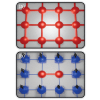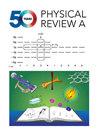Combining physics-informed neural networks with the freezing mechanism for general Hamiltonian learning
IF 2.9
2区 物理与天体物理
Q2 Physics and Astronomy
引用次数: 0
Abstract
The precision required to characterize a Hamiltonian is central to developing advantageous quantum computers, providing powerful advances in quantum sensing and crosstalk mitigation. Traditional methods to determine a Hamiltonian are difficult due to the intricacies of quantum systems, involving numbers of equations and parameters that grow exponentially with the number of qubits. To mitigate these shortcomings, in this paper, we introduce an innovative and effective procedure integrating a physics-informed neural network (PINN) with a freezing mechanism to learn the Hamiltonian parameters efficiently. Although PINN and experimental data alone would become impractical as increases, the mechanism we introduce freezes the interactions of most of the qubits, leaving just a qubit subsystem to be analyzed by the PINN method. Determination of all physical parameters is accomplished by analyzing the system by parts until completion. We validated the efficacy of our method using simulation data obtained from the IBM quantum computer to obtain the training data and we found that a PINN can learn the two-qubit parameters with high accuracy, achieving a median error of less than for systems of up to four qubits. We have successfully combined the PINN analysis of two qubits with the freezing mechanism in the case of a four-qubit system.

将物理信息神经网络与一般哈密顿学习的冻结机制相结合
表征哈密顿方程所需的精度是开发优势量子计算机的核心,可为量子传感和串扰缓解带来强大的进步。由于量子系统错综复杂,涉及的方程和参数数量随量子比特数量呈指数增长,因此确定哈密顿的传统方法非常困难。为了缓解这些缺陷,我们在本文中介绍了一种创新而有效的程序,它将物理信息神经网络(PINN)与冻结机制整合在一起,从而高效地学习哈密顿参数。虽然随着 N 的增加,仅靠 PINN 和实验数据将变得不切实际,但我们引入的机制冻结了大部分量子比特的相互作用,只留下一个量子比特子系统供 PINN 方法分析。所有物理参数的确定都是通过分析系统的各个部分完成的。我们利用从 IBM 量子计算机获得的模拟数据来获取训练数据,验证了我们方法的有效性,我们发现 PINN 可以高精度地学习双量子比特参数,对于多达四个量子比特的系统,中位误差小于 0.1%。在四量子比特系统中,我们成功地将双量子比特的 PINN 分析与冻结机制结合起来。
本文章由计算机程序翻译,如有差异,请以英文原文为准。
求助全文
约1分钟内获得全文
求助全文
来源期刊

Physical Review A
物理-光学
CiteScore
5.40
自引率
24.10%
发文量
0
审稿时长
2.2 months
期刊介绍:
Physical Review A (PRA) publishes important developments in the rapidly evolving areas of atomic, molecular, and optical (AMO) physics, quantum information, and related fundamental concepts.
PRA covers atomic, molecular, and optical physics, foundations of quantum mechanics, and quantum information, including:
-Fundamental concepts
-Quantum information
-Atomic and molecular structure and dynamics; high-precision measurement
-Atomic and molecular collisions and interactions
-Atomic and molecular processes in external fields, including interactions with strong fields and short pulses
-Matter waves and collective properties of cold atoms and molecules
-Quantum optics, physics of lasers, nonlinear optics, and classical optics
 求助内容:
求助内容: 应助结果提醒方式:
应助结果提醒方式:


